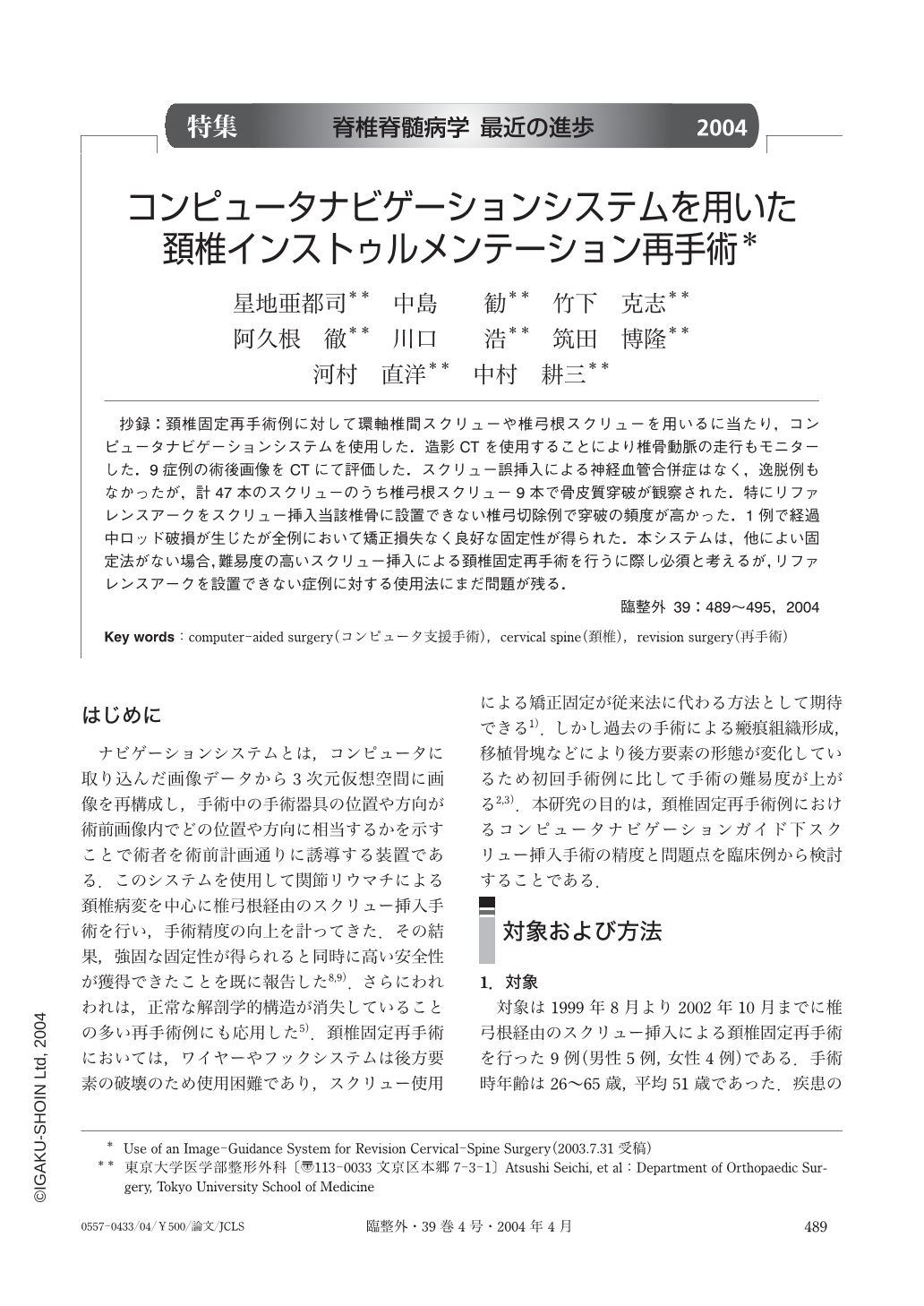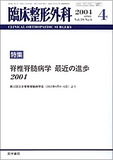Japanese
English
- 有料閲覧
- Abstract 文献概要
- 1ページ目 Look Inside
抄録:頚椎固定再手術例に対して環軸椎間スクリューや椎弓根スクリューを用いるに当たり,コンピュータナビゲーションシステムを使用した.造影CTを使用することにより椎骨動脈の走行もモニターした.9症例の術後画像をCTにて評価した.スクリュー誤挿入による神経血管合併症はなく,逸脱例もなかったが,計47本のスクリューのうち椎弓根スクリュー9本で骨皮質穿破が観察された.特にリファレンスアークをスクリュー挿入当該椎骨に設置できない椎弓切除例で穿破の頻度が高かった.1例で経過中ロッド破損が生じたが全例において矯正損失なく良好な固定性が得られた.本システムは,他によい固定法がない場合,難易度の高いスクリュー挿入による頚椎固定再手術を行うに際し必須と考えるが,リファレンスアークを設置できない症例に対する使用法にまだ問題が残る.
We adopted an image-guidance system in order to achieve rigid fixation and improve the accuracy of screw placement in the cervical spine in revision cases. A total of 9 patients were enrolled in this study. Seven of the patients had cerebral palsy (CP) and 2 had recurrent giant cell tumors in the cervical spine. Four patients underwent occipitocervical fusion, three underwent multi-level cervical or cervico-thoracic fusion, and two underwent occipitothoracic fusion. Transverse and sagittal sections were generated to evaluate screw positions with postoperative CT scans. The patients were followed clinically and with plain radiographs and reconstruction CT for an average of 26 months (range:9-47). A total of 47 screws, consisting of 6 C1/2 transarticular screws and 41 pedicular screws, were inserted by frameless stereotaxy. No serious complications related to the surgical procedure occurred. The myelopathy was alleviated in all patients. In one case with C1/2 subluxation associated with CP, rod breakage was detected 8 months after surgery, but there were no signs of nonunion and no reoperations in the series. All 6 transarticular screws were accurately placed inside the pedicles, and 32 of the 41 pedicular screws were accurately inserted inside the pedicles without perforating the bone cortex of the pedicles. The other 9, however, a slightly breached the vertebral artery groove or the neural space. When hooks or wiring techniques can not be used because of previous unsuccessful surgery, the transpedicular screw system is a reliable option for obtaining rigid fixation. Image guidance is expected to improve the safety of technically difficult surgical procedures, such as cervical screw placement in revision cases. Intraoperative motion between segments caused by creation of the screw holes and tremor of the surgeon's hand are limitations to be overcome, and they make lateral fluoroscopy necessary. An image-guided probe is also helpful in creating accurate screw holes. Attachment of the stereotactic reference arc to the spinous process is impossible in cases in which laminectomy or laminoplasty has been performed in the past, and application of the image-guidance system is limited to determining the entry point of screw holes by attaching a reference arc to another vertebra. The transient fixation system shows promise of resolving this problem by restricting intraoperative motion of the cervical spine. Although a few problems remain to be solved, the image-guidance system is useful for revision surgery of the cervical spine, because it enables a surgeon to perform relatively safe and accurate surgery with transpedicular screw fixation.

Copyright © 2004, Igaku-Shoin Ltd. All rights reserved.


